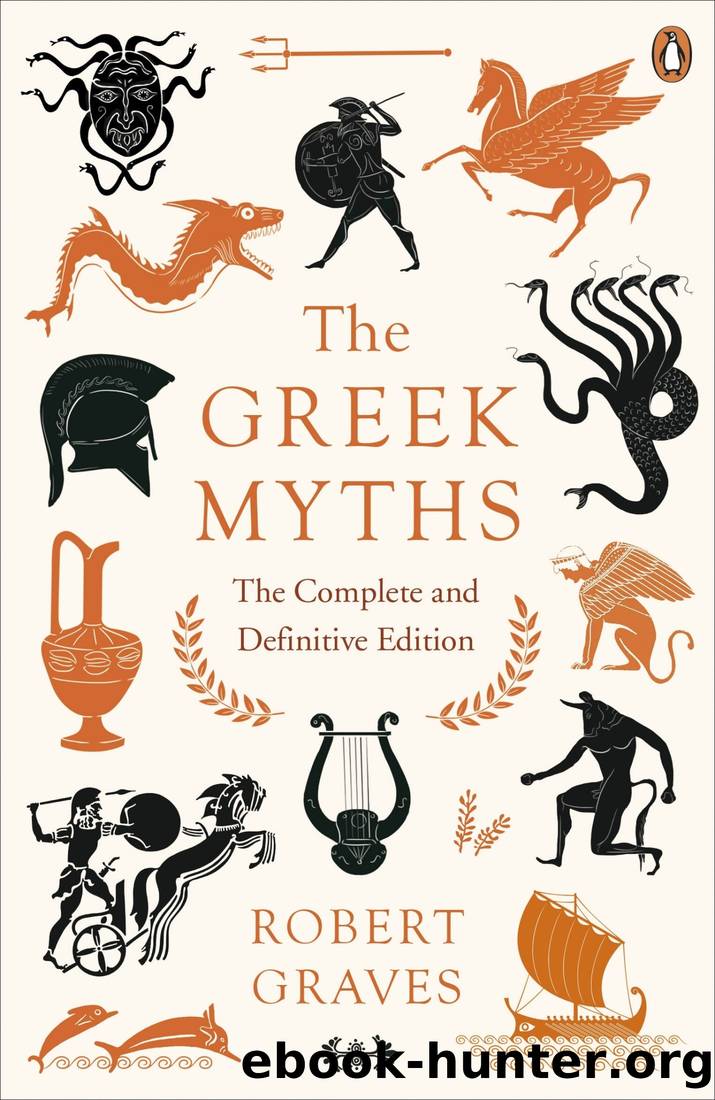The Greek Myths: 2 by Graves Robert

Author:Graves, Robert [Graves, Robert]
Language: eng
Format: epub
Tags: History, Classics, Reference, Religion
ISBN: 9780141941790
Goodreads: 49245035
Publisher: Penguin eBooks
Published: 1955-01-01T08:00:00+00:00
1. The disastrous invasion of the Mycenaean Peloponnese by uncultured patriarchal mountaineers from Central Greece which, according to Pausanias (iv. 3. 3) and Thucydides (i. 12. 3), took place about 1100 B.C., was called the Dorian because its leaders came from the small state of Doris. Three tribes composed this Dorian League: the Hylleids, who worshipped Heracles; the Dymanes (âenterersâ), who worshipped Apollo; and the Pamphylloi (âmen from every tribeâ), who worshipped Demeter. After overrunning Southern Thessaly, the Dorians seem to have allied themselves with the Athenians before they ventured to attack the Peloponnese. The first attempt failed, though Mycenae was burned about 1100 B.C., but a century later they conquered the eastern and southern regions, having by now destroyed the entire ancient culture of Argolis. This invasion, which caused emigrations from Argolis to Rhodes, from Attica to the Ionian coast of Asia Minor, and apparently also from Thebes to Sardinia, brought the Dark Ages into Greece.
2. Strategic burial of a heroâs head is commonplace in myth: thus, according to the Mabinogion, Branâs head was buried on Tower Hill to guard London from invasion by way of the Thames: and according to Ambrose (Epistle vii. 2), Adamâs head was buried at Golgotha, to protect Jerusalem from the north. Moreover, Euripides (Rhesus 413â15) makes Hector declare that the ghosts even of strangers could serve as Troyâs guardian spirits (see 28. 6). Both Tricorythus and Gargettus lie at narrow defiles commanding the approaches to Attica. Iolausâs pursuit of Eurystheus past the Scironian Rocks seems to have been borrowed from the same icon that suggested the myth of Hippolytus (see 101.g).
3. The land of the Phaeacians (see 170. y) was Corcyra, or Drepane, now Corfu, off which lay the sacred islet of Macris (see 154. a); the Cronian Sea was the Gulf of Finland, whence amber seems to have been fetched by Corcyrian enterprise â Corcyra is associated with the Argonaut amber-expedition to the head of the Adriatic (see 148. 9).
4. Triops, the Greek colonist of Rhodes, is a masculinization of the ancient Triple-goddess Danaë, or Damkina, after whose three persons Lindus, Ialysus, and Cameirus were named. According to other accounts, these cities were founded by the Telchines (see 54. a), or by Danaus (see 60. d).
5. Alcmene being merely a title of Heraâs, there was nothing remarkable in the dedication of a temple to her.
6. Polygnocus, in his famous painting at Delphi, showed Menelaus with a serpent badge on his shield (Pausanias: x. 26. 3) â presumably the water-serpent of Sparta (see 125. 3). A fox helped the Messenian hero Aristomenes to escape from a pit into which the Spartans had thrown him (Pausanias: iv. 18. 6); and the goddess as vixen was well known in Greece (see 49. 2 and 89. 8). The toad seems to have become the Argive emblem, not only because it had a reputation of being dangerous to handle, and of causing a hush of awe among all who saw it (Pliny: Natural History xxxii. 18), but because Argos was first called Phoronicum (see 57.
Download
This site does not store any files on its server. We only index and link to content provided by other sites. Please contact the content providers to delete copyright contents if any and email us, we'll remove relevant links or contents immediately.
| Publishing & Books | Research |
| Writing |
Asking the Right Questions: A Guide to Critical Thinking by M. Neil Browne & Stuart M. Keeley(5712)
Autoboyography by Christina Lauren(5206)
Eat That Frog! by Brian Tracy(4484)
Dialogue by Robert McKee(4357)
Sticky Fingers by Joe Hagan(4148)
Journeys Out of the Body by Robert Monroe(3593)
Annapurna by Maurice Herzog(3449)
Full Circle by Michael Palin(3418)
Schaum's Quick Guide to Writing Great Short Stories by Margaret Lucke(3349)
Elements of Style 2017 by Richard De A'Morelli(3325)
The Art of Dramatic Writing: Its Basis in the Creative Interpretation of Human Motives by Egri Lajos(3040)
Atlas Obscura by Joshua Foer(2934)
Why I Write by George Orwell(2917)
The Diviners by Libba Bray(2910)
In Patagonia by Bruce Chatwin(2897)
The Fight by Norman Mailer(2892)
The Mental Game of Writing: How to Overcome Obstacles, Stay Creative and Productive, and Free Your Mind for Success by James Scott Bell(2877)
Venice by Jan Morris(2549)
The Elements of Style by William Strunk and E. B. White(2454)
